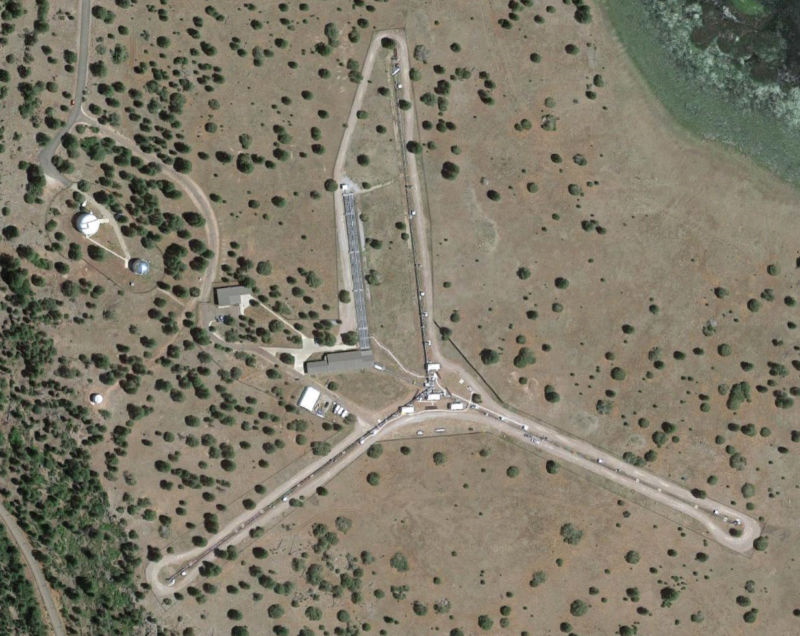About NPOI
The Navy Precision Optical Interferometer (NPOI) is a unique scientific instrument used to expand humanity's understanding of our place in the universe. The instrument is located just outside of Flagstaff Arizona, along Lake Marry Road. The NPOI is a collaborative effort between the Naval Research Laboratory, the Naval Observatory, and Lowell Observatory. Large aperture telescopes can see faint distant objects while small telescopes are simpler in construction and operation. A large collection area increases the detectible wavefront of a target producing which may higher resolution and better-quality science. New single aperture telescopes are being constructed on the order of 30-meter primary mirror diameter. These designs are engineering marvels and expensive to build and maintain.
The NPOI utilizes a technique called optical interferometry that allows for multiple beams of light to be collected by small apertures and then combined on a single detector. By combining the light from small siderostats or telescopes a much larger telescope can be synthesized. NPOI is capable of 437-meter baseline observations, far exceeding the large 30-meter single apertures. The long-baseline results in high-resolution science but the small collection areas limit NPOI to looking at bright targets.
The current design
Interferometry is common in radio astronomy because the collected data can be combined in post-processing. Visible wavelengths of light cannot yet be combined in data reduction and therefore requires real-time beam combining. When combining the collected starlight, the star's wavefront must reach the detector at the same time. The NPOI array is configurable, meaning the path lengths of the light are not fixed between the collection location and the detector. Additionally, as Earth rotates the distance between the target and the individual collection stations changes. To compensate for variation in path length a series of “delay lines'' are used. There are two types of delay lines used in NPOI, long delay lines (LDL), and Fast delay lines (FDL). The FDLs are robotic mirrors that travel inside 18-meter long vacuum pipes. The FDL system can change the optical path in the 2-nanometer range over the entire length of the 18 meter FDL track. To minimize light distortion and losses much of the interferometer is held in a low vacuum.
The FDLs have their own vacuum pump, always-on, to maintain low pressure. The FDLs are typically held below 10 mTorr but can only be operated at pressures below 100 mTorr and atmosphere. The PZT actuators used to stabilize the optics can arc and burn at intermediate pressures which could damage the mirrors and requires a complete rebuild of the FDL cars.
The current vacuum manifold attaches to the delay line “snoots”. The snoots are passed through to the inner room where the light is combined. The snoots were never meant to support the mechanical forces exerted by the vacuum manifold, rather they close the distance between the inner room and the FDL tanks. When work at the front of the FDL tank is required, engineers must disconnect the vacuum manifold from the snoots and remove the snoots completely. The current design slows maintenance and allows the breaking of critical components every time maintenance is required.
Over time the snoots and upper portion of the vacuum manifold become rotated and deformed making a mechanical connection of the vacuum manifold to the FDL tanks difficult. Varying sizes of bellows are used to temporarily compensate for the failure of the manifold, but it is expected this short-term solution will rupture. Figure 5 shows one of the bellows compensating for the distorted manifold. Bellows are meant to be used in axial conditions, not translational or rotational loads.
The integrity of the vacuum system is critical to the continued operation of the interferometer. Without a redesigned vacuum manifold operations at NPOI will be forced to shut down when the current system fails. This is where the NPOI Capstone team will step in.
